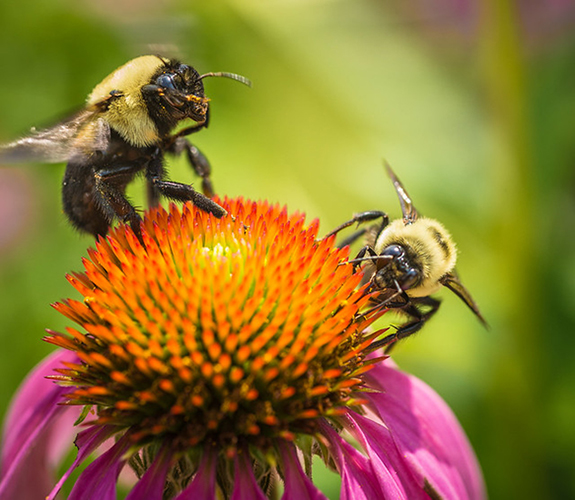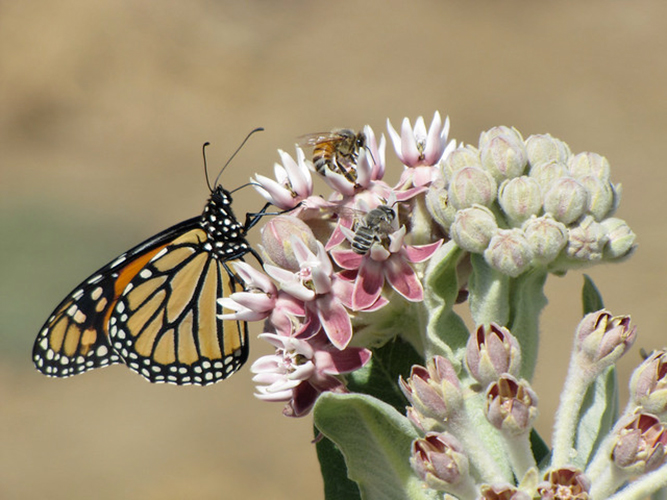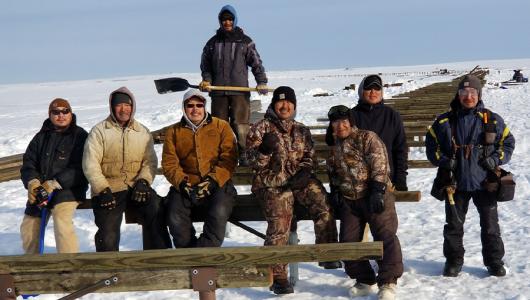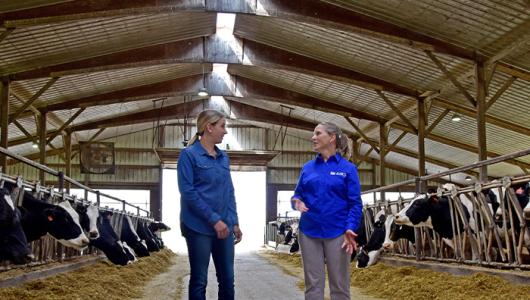Ask the Expert is a new series launching on farmers.gov. In this Ask the Expert, Karin Jokela answers a few questions about how farmers and ranchers can use USDA’s Conservation Reserve Program to help pollinators.
Karin is a biologist with Natural Resources Conservation Service and The Xerces Society for Invertebrate Conservation based in southeast Minnesota. She collaborates with NRCS staff in Minnesota and Wisconsin to provide individual consulting to farmers on habitat restoration and pollinator-friendly farm management practices and serves as an adviser to staff of other conservation organizations.
In this Ask the Expert, Karin answer questions about the benefits of USDA’s Conservation Reserve Program for pollinators.

What is the Conservation Reserve Program, and how can it be used to create habitat for pollinators?
The Conservation Reserve Program is a land retirement program that encourages farmers to voluntarily convert highly erodible cropland or other environmentally sensitive acreage to permanent vegetative cover. Perennial grasslands, especially those with a high percentage of native forbs and legumes, are critical to the health of honey bees, wild pollinators, and wildlife in general.
Pollinators and other beneficial insects have been in alarming decline over the past couple of decades. Pollinators are essential in supporting ecosystem function and global food security, but they are facing many threats, including habitat loss, diseases, pathogens, and pesticide exposure. Declines in honey bees captured the general public’s attention, but we’ve since documented declines in bumblebees, butterflies, and other invertebrates. CRP offers a great opportunity to rebuild pollinator populations within the agricultural landscape where we have seen the greatest loss of habitat.
How do you design a CRP seed mix to maximize benefits to wild pollinators?
If pollinator conservation is your goal when putting in a CRP grassland, then it is important to include a high percentage of wildflowers to provide nectar and pollen resources. Including host plant species like milkweed is also valuable for monarch butterflies and other specialist insects.
There is a vast diversity of wild bee species that might occupy CRP plantings – some only fly for a couple of weeks each year and are highly specialized foragers on certain flowers. Others, like bumblebees, are considered generalist foragers and need abundant blooms from May through October.
Pollinator-focused CRP plantings should include a minimum of three blooming species in spring, summer, and fall. However, adding more diversity to your seed mix will increase overall biodiversity and functionality for wildlife, water interception and infiltration, drought tolerance, resistance to invasive species, and stand longevity and resiliency. Pollinator diversity is known to increase with plant diversity, so selecting plants from different guilds – functional groups like cool season grasses, warm season grasses, legumes, and non-legume forbs – as well different plant families and life history traits – annual, biennial, and perennial – will provide the most benefits to pollinators.

How should CRP grasslands be managed over time?
All grasslands need management. Without regular disturbance events such as fire, grazing, or haying, prairies eventually turn into woodlands. However, if these management techniques are done too often, it can adversely affect pollinators by destroying floral resources and nesting sites and killing wildlife that cannot escape.
For this reason, there are two key principles that we recommend for best management of pollinator habitat:
- Do not treat the entire site at one time, and
- when a treatment is being applied, do not treat more than one third of the site per year.
This way, you’re leaving some undisturbed areas of refuge for insects that cannot fly or run away. Later in the season, insects from the adjacent refuge areas will repopulate the disturbed areas.
To learn more about pollinators, watch this video with Karin Jokela or visit the Xerces website.


